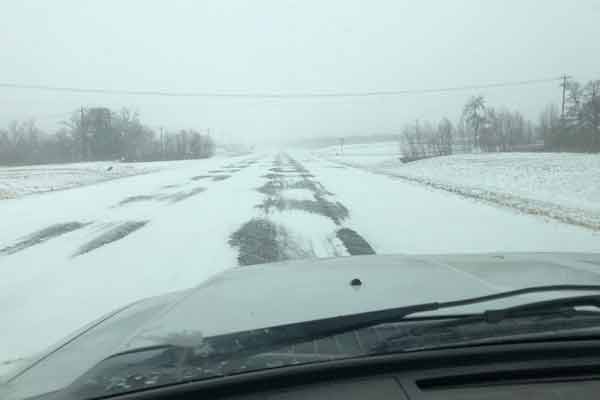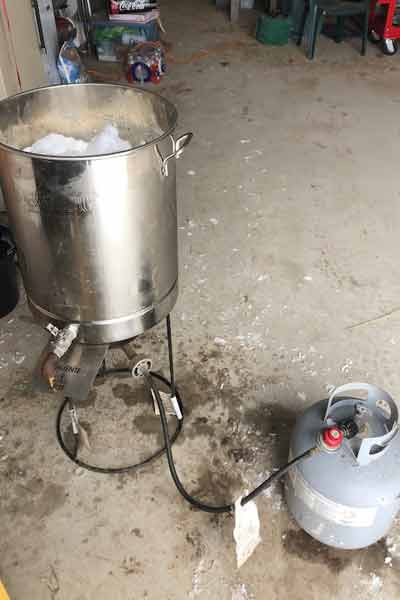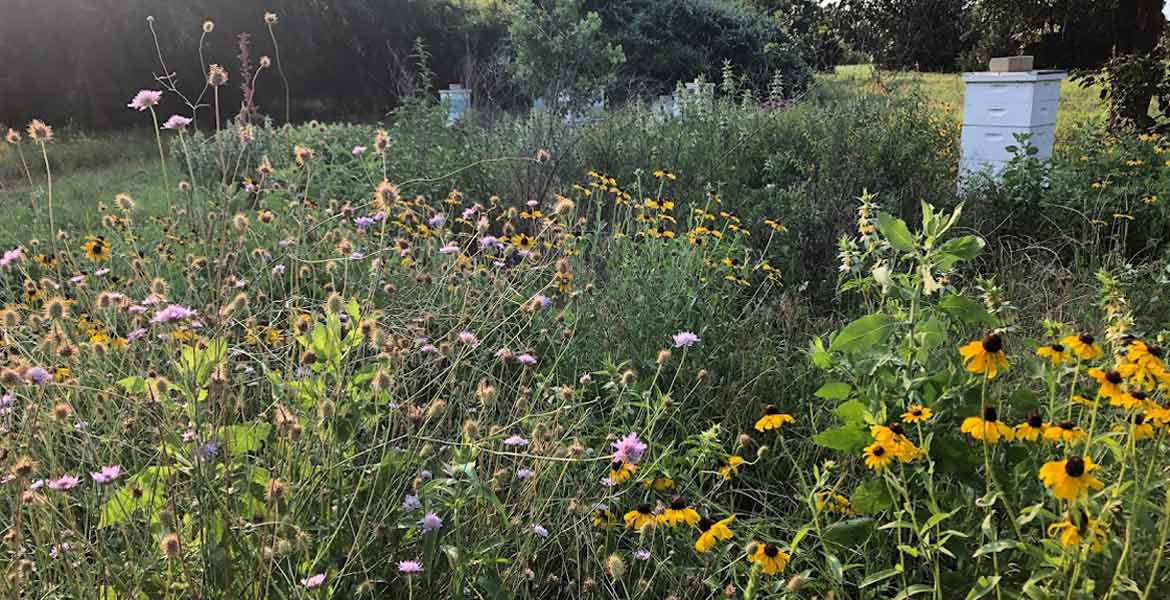In spring 2020 we saw the emergence of COVID-19. It was only my second spring with my hives so I wasn’t expecting to harvest much–and I didn’t–so when everything shut down it wasn’t too big a deal for me. I sold a few pounds of my north Texas honey at a pop-up shop my friend let me set up at her horse show. I gave some to family & friends and ate whatever was left. The bees carried on as usual and gave me plenty to do while most people were stuck inside trying to maintain some sort of normalcy and desperately looking for new ways to fight boredom. The days went on and the seasons changed; summer to fall to winter.
My hives were healthy and I felt good about them withstanding the winter months.
North Texas winters are usually mild so not much prep is needed. In fact, many commercial beekeepers overwinter their hives in Texas because so little winter prep/maintenance is needed here. I confidently tucked my bees into their hives in mid December and was looking forward to actually getting enough honey in 2021 to make a profit. I had ideas of honey gift baskets, beeswax candles, wildflower seed packets and more; enough items that I was sure I’d be able to recoup my costs and maybe even net a little.
Then came Snowmageddon.

Traveling was hazardous, power was either rolling blackouts or out altogether for many. Farm power was out for three days, which meant no water pump. However, even when the power came back on the water pipes were completely frozen. The bees were fine. They were clustered together maintaining the necessary temperature for survival in a state of near hibernation; not eating/drinking much and using as little energy as possible. The donkeys were another story. Actually Johnny was fine, it was Queso (being the elderly gentleman he is) I was worried about. I managed to find a fleece blanket and another outer layer that *sort of* fit him. He was warmer and seemed to love strutting his stuff in the bright orange blanket… the neighbors sure got a kick out of it! 😉 Their water trough was frozen over and I had to drive up there daily– yay for learning how to drive in northern Illinois winters!– to break through the ice. But when the trough ice was too thick to break through we needed a way to melt it back down to get to the liquid underneath.
Enter the “Bayou Classic” crawfish boiler!

Initially purchased to make large quantities of sugar syrup to feed the bees after the honey flow is over, it fit the bill perfectly to turn solid water back into liquid! Add snow to the pot, heat until almost boiling then pour over the ice in the trough. Since we had splurged for the model with the spigot it made refilling buckets for transport super easy. The donkeys had water again! Unfortunately, it was necessary to repeat this procedure daily which meant navigating the icy roads for three days. But we made it through without incidence and were very thankful for it; things could have gone much worse as they did for so many others.
Fast forward to spring.
After recovering from the arctic blast things looked like they would proceed as usual. The bees started waking up about late February and I noticed them bringing pollen in early March. There was even some baby bee cells getting ready to hatch, the first wave of summer bees! The girls began to bring in and store nectar about mid-March. April came and went as expected: lots of baby bees, pollen and nectar. Time to add the honey supers to a few of the strong hives, they’re running out of storage space… Things are looking good for a decent honey harvest this year! Seasoned beekeepers can get up to 80 pounds from one hive. 2020 was my first year to harvest and I got a mere 30 pounds TOTAL from EIGHT hives. A lot of work for not a lot of payoff. But, while I might not reach 80 pounds per hive I’ve got good populations and these girls are busy!
Then it rained… and rained… and rained.
While not the rainiest May on record (that would be 2015 with appx. 14 inches), we got a whopping 11.63 inches. Not conducive to honey production since every time it rains it washes the nectar and pollen from the flowers. So the month that was supposed to provide the most resources was pretty much a bust. Many beekeepers found themselves feeding their bees sugar syrup just to keep them alive during this time. Others lost colonies altogether. Overall, many of the beekeepers I spoke with (if their hives even survived) were not able to harvest anything from them. A complete year of bee care and maintenance with nothing to show for it.
I was one of the lucky ones. Not only did my hives survive but somehow managed to gather and cap enough nectar/honey for themselves and some surplus for me. I harvested approximately 30 pounds in mid June. Since it was my first year I was a little unsure of the timing–I wanted to make sure I harvested before the summer dearth before the bees started eating their stores and I thought I remembered hearing to harvest by July 4th. (It turns out that in my apiary the dearth happened around late July so I was a bit early.) My over-ambition paid off because that honey was the sweetest I’ve ever tasted. I gave some to family and sold the rest.
One more hive check before going on vacation.
I was going on vacation for 10 days in late July and wanted to make sure everybody had enough to eat and things were looking good. Upon opening a couple hives I find more frames of capped honey–these were not there two weeks ago at my last inspection! Decision time: do I try to cram in an extraction two days before I leave town, or do I close the hive back up and hope the frames of honey are uneaten and free of the dreaded small hive beetles when I get back? I choose the former. A late night extraction and I’m three gallons richer of sweet honey! Unfortunately, however, this honey was not dehydrated to the necessary 17.5% or less moisture content. Honey that is less than 17.5% moisture content can stay edible virtually forever. Honey that is more than 17.5% moisture content will ferment fairly quickly… good for mead, bad for raw bottled honey. (Note: the less moisture, the thicker and sweeter the honey!) But this honey was very sweet as well. Not as good as the previous, but really nice with no aftertaste. I wasn’t willing to give it back to the bees.
What am I supposed to do with this honey?
It turns out there is a way to dehydrate extracted honey without losing the raw integrity (i.e. heating). My solution was to empty a small linen closet, install a small electric dehydrator and pour the honey into two glass baking pans (to increase the surface area). I closed the door and sealed it with duct tape. After approximately four weeks I unsealed the door, tested it and Voila! It was 17.5%! I would have like it to be a little lower, but this is definitely acceptable! Tasted it and it was amazing. This will do.
State Fair of Texas honey contest.
It was on the horizon. Closed last year but going strong this year. Should I do it? It was a last minute decision (and you can read about it in my next post) but I did. And it turns out SunnieBelle’s Sweet Bees have not only been able to survive unprecedented winter and spring weather, but have made the best tasting honey in North Texas for the year 2021 (First Place – Black Jar Honey Contest at the Sate Fair of Texas)! I’m so proud of my girls and look forward to another great year with them in 2022! Stay tuned 😉






